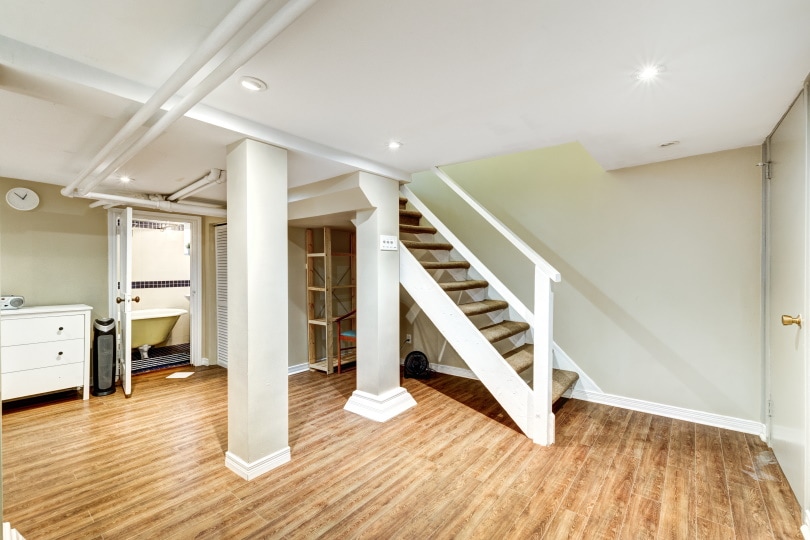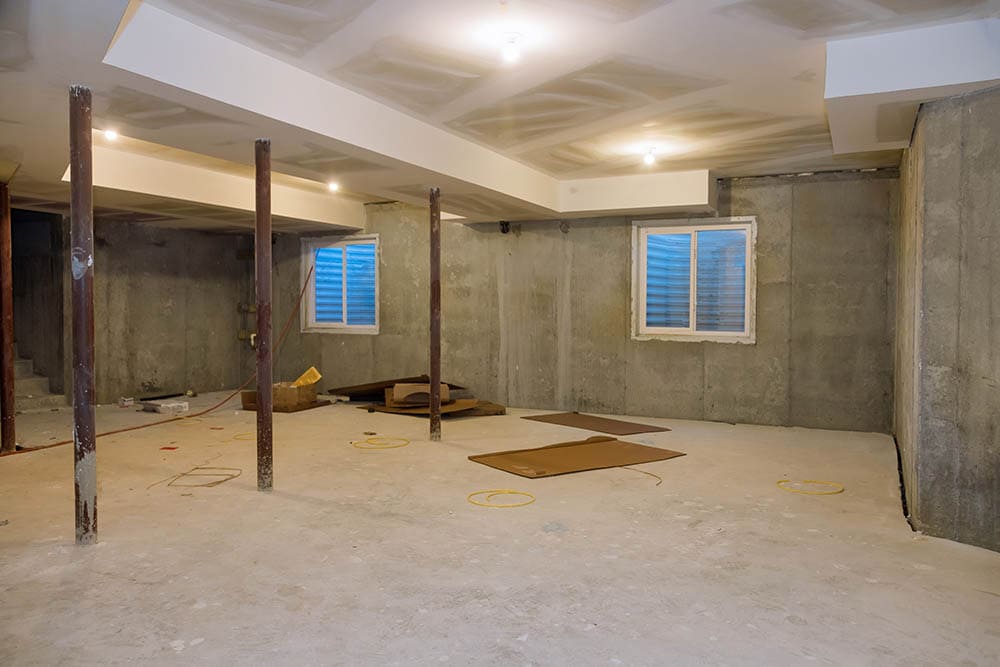What Is the Ideal Humidity Level for a Basement? Causes, Seasons & Tips
-
Samantha Reed
- Last updated:

Nobody likes it when it’s humid outside. Walking out your front door and feeling as if you’re swimming in the air isn’t fun for anybody. High or low humidity levels can be a dangerous and invisible threat to your home and health. Uncontrolled humidity levels can lead to all sorts of problems in your home: mold, fungal infestations, and increased risk of asthma. Understanding the ideal humidity level for your basement is critical to ensuring your home’s structural integrity and your safety.
Generally, the humidity levels in your basement should be relative to the rest of your home (50%). Basements are typically colder than the rest of your home and have less air circulation than other rooms, causing higher humidity levels.
What is the ideal humidity level to prevent mold growth and other health problems? Let’s dive in.
Normal Basement Humidity Levels
The ideal humidity level for your basement should be around 50%. This will change with the seasons, as you need to adjust for the different moisture levels in the air. To maintain an ideal humidity in your basement, it should be at the optimum percentage range of 30% to 50% maximum. While 50% may seem like a high percentage level, it will keep your home comfortable and not leave you at risk for mold growth or respiratory issues.
If your humidity level is too high, the increased moisture will cause mold to grow on the floor and in the walls of your home. Any humidity level of 60% or above is considered too high, and any below 25% is too low.

Ideal Humidity for the Seasons
Depending on the weather, your ideal humidity level in your basement will be different to counteract the weather. Your humidity level should change based on the current conditions.
Basement Humidity Levels During Summer
The hotter it is outside, the easier it is for your home and basement to reach hotter-than-average temperatures. The hotter the temperature, equals more moisture in the air, leading to higher humidity levels inside your home and basement.
During the summertime, your basement should be at 50% humidity. The warm air outside rises higher and forces the cooler, moist air into the basement of your home. You might need a dehumidifier during the summer to maintain a 50% humidity rate. Without a humidifier, you might find that your basement runs closer to 60% humidity, which is too high. Aim for 50%, or you risk having mold, mildew, or other bacteria.
Basement Humidity Levels During Winter
Because winter is colder, you may assume you are in the clear and don’t have to worry about your humidity in the basement. However, winter is when you must pay the most attention to the humidity level. You are doubly prone to extra humidity if you live in an area with lots of rain, snow, and ice. The smallest changes and increases in the air’s moisture, like when it rains or snows, can increase the chances of mildew and mold growth.
In the winter, your basement should range between 25% and 40% humidity to prevent excess moisture from settling in your home. However, you must be extra careful to keep your home from dropping too low in moisture, or you can increase your chances of nosebleeds, dry skin, and becoming sick during flu season.
What Causes Humidity in Basements?
Basements have a higher humidity level than your home because they are more poorly insulated. The thin insulation in basements allows outside weather conditions, like excess heat, cold, or moisture, to affect the indoor temperature and humidity of your basement.
Additionally, if you have cracks in your foundation or have leaking pipes in your home, they can also increase the moisture level and overall humidity. The easiest way to tell if your humidity level is off is if you notice your basement walls look, smell, or feel damp, and the air might also seem thicker than usual.
Some of the most common reasons your basement has high humidity levels include:
- Having few or no windows: A basement is typically a dark, enclosed space. The spaces are often more damp than the rest of the house due to the thin insulation and lack of airflow. Your basement is typically airtight, meaning water vapor or moisture that enters the area cannot escape on its own.
- Being underground: If you’re a gardener, you know that the ground absorbs water like a sponge. When it rains or snows heavily, the water seeps into the ground until fully absorbed. However, because the water is being held in the soil and ground around your home, the water can seep into your underground basement through your home’s foundation or the basement walls.
- Being made from concrete: Your basement’s lack of airflow is often caused by it being made from concrete. Being surrounded by concrete and other materials that don’t allow airflow means the air inside your basement naturally becomes hot and humid over time. This natural reaction is one of the leading causes of mold growth and other problems like water damage.

How to Remove Excess Humidity from the Basement
While controlling your humidity may seem daunting, there are various ways to lower the moisture in your basement. Most methods of controlling your humidity levels are cheap and readily available for you to utilize.
- Buy a dehumidifier: Keep one in your basement to pull excess moisture from the air. Rock salt and silica gel can act as natural dehumidifiers, too.
- Seal the gaps and cracks in your walls, window areas, and foundation. If you seal the cracks, it will stop extra moisture from sneaking into the home.
- Having your basement insulated minimizes the overall heat transfer. Poor insulation in the basement is one of the reasons humidity levels become inconsistent. If you insulate your basement, you can maintain a more consistent temperature and reduce overall humidity.
- Reduce moisture-creating activities in the basement: If you are doing laundry in the basement, cooking, or showering, it can create more moisture in the area.
You can also reduce the humidity in your basement by buying plants. Some species, like the Peace Lilly, remove excess moisture from an area and need little sunlight to survive, making them great additions to your basement. Reed Palm, Boston Fern, and Cacti are also great options. Cacti can thrive in harsh conditions and excel at removing excess moisture from an area.
Other natural remedies include using bowls of baking soda and leaving them in the room, but you must replace them every month. You can also use rock salt in an open container or leave it fully exposed to the air. Both will naturally draw excess moisture out of the air.
Installing a fan or finding a way to improve ventilation in your basement can also alleviate the issue.
Final Thoughts
The ideal humidity level for the average basement should be anywhere from 30% to 50%, depending on the season. If you have too high a humidity level, you increase your risk of growing mold, mildew, and other bacteria inside your home. However, if your humidity is too low, you can damage your home and health. Maintaining the proper moisture of a basement is critical for your safety and the structural integrity of your home.
Featured Image Credit: Anatoli Igolkin, Shutterstock
Contents
